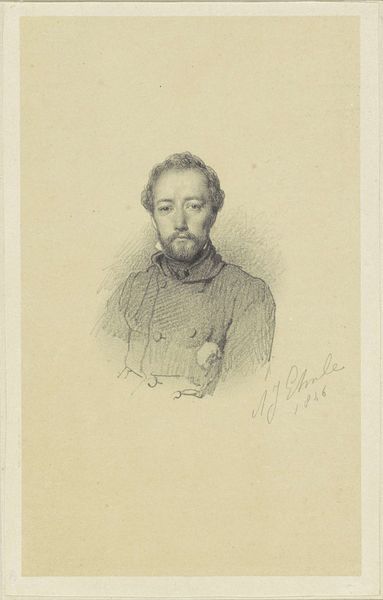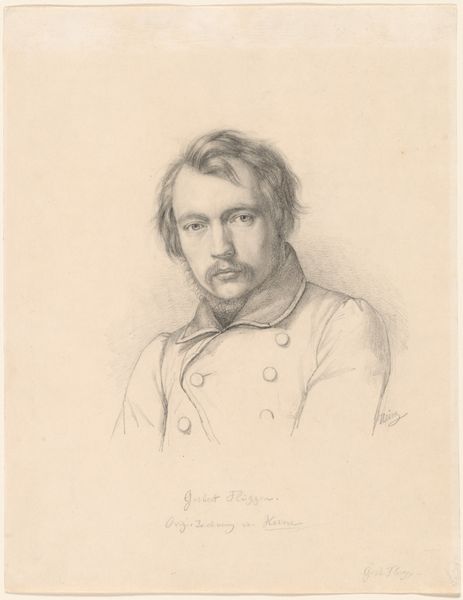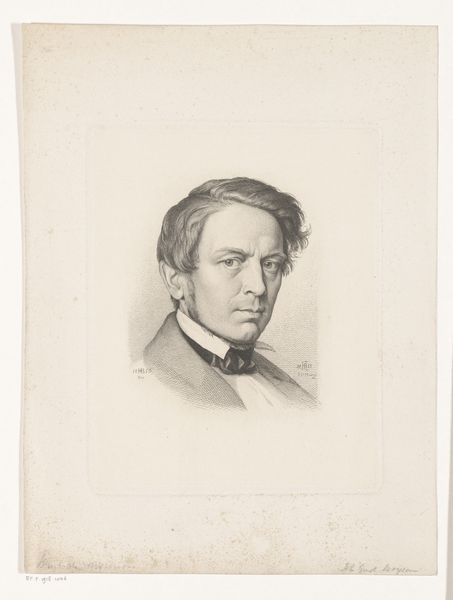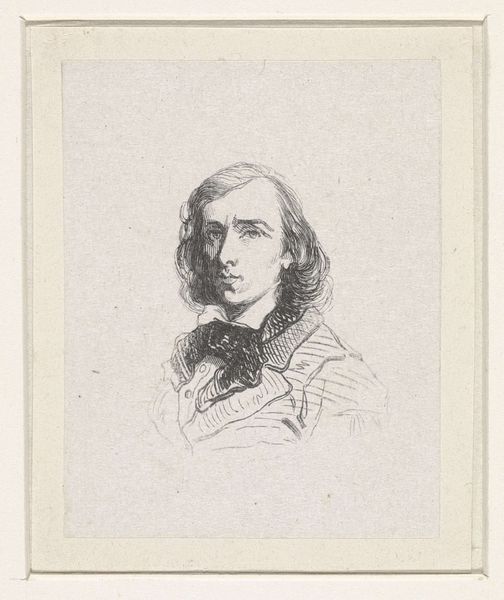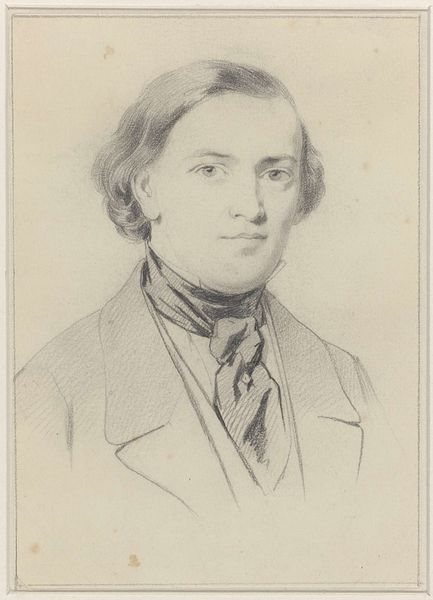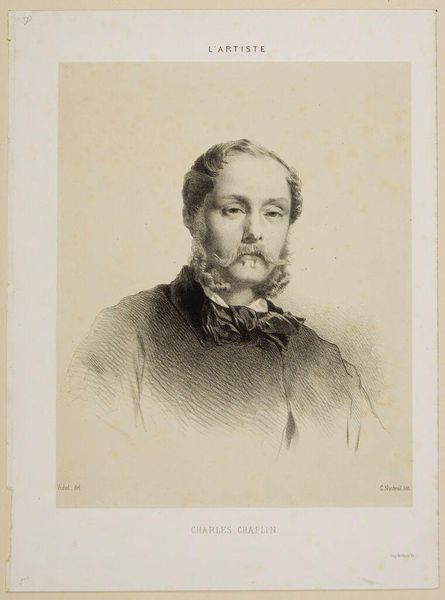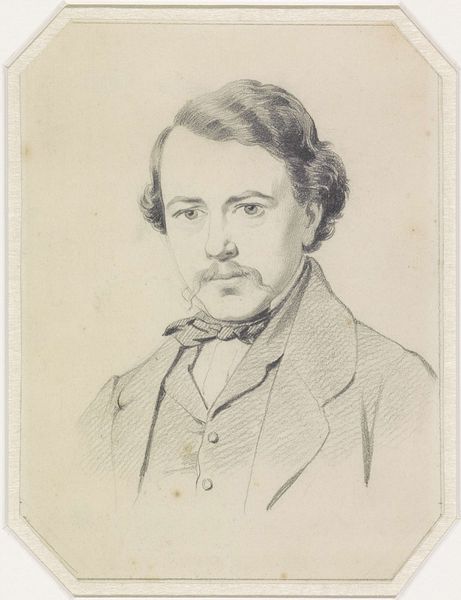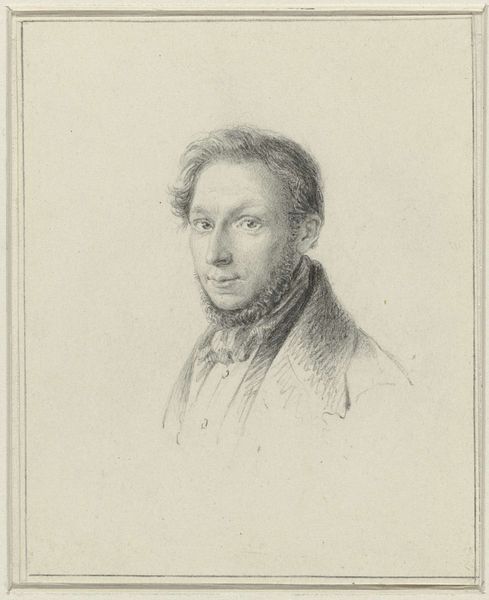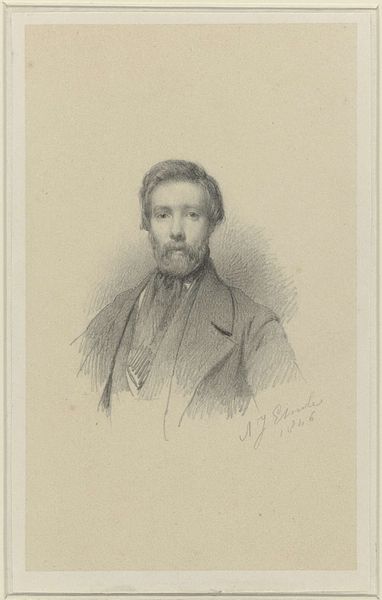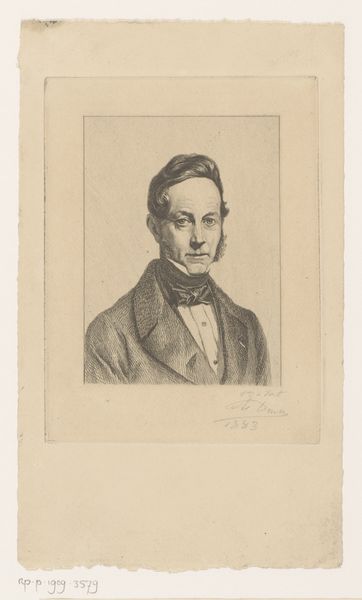
drawing, pencil
#
portrait
#
drawing
#
figuration
#
pencil drawing
#
romanticism
#
pencil
Dimensions: height 146 mm, width 87 mm
Copyright: Rijks Museum: Open Domain
This is a drawing of Charles Leickert made by Adrianus Johannes Ehnle around 1846. Notice how the artist captured Leickert, framing his face with soft lines. It is a portrait of a man of his time: a dark coat, a silk tie, hair parted to the side, a wispy beard. The portrait in and of itself is symbolic. Throughout the ages, portraiture has been a way to immortalize a person, fixing them in time. Think of the Roman busts of emperors, or the funerary masks of ancient Egypt, these are all attempts to freeze a person's image and memory. But more subtly, the soft expression on Leickert's face is also significant. This expression, an open, gentle gaze, is a motif that runs through art history. From the Renaissance to the modern age, the expression has been a powerful means of connecting with the viewer, inviting empathy. It triggers a subconscious emotional response, and the feeling that we are witnessing an authentic representation of the subject's inner self. Like a constellation, these elements form connections across time and cultures, their meanings shifting yet their impact constant.
Comments
No comments
Be the first to comment and join the conversation on the ultimate creative platform.

